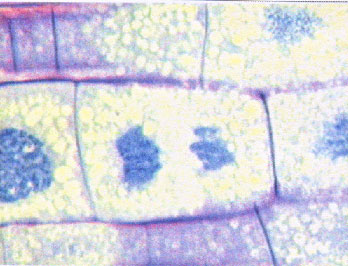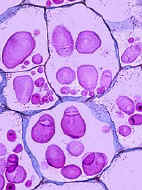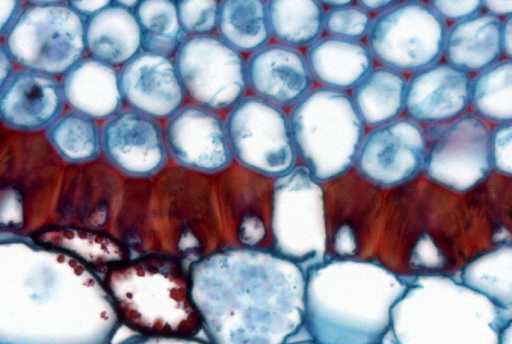|
Meristematic Parenchyma

|
| Meristematic Parenchyma |
Meristematic cells are parenchyma cells that consist of a group of cells which remain in continuous state
of division or they retain their power of division. They composed of immature cells with no intercellular spaces. Meristematic
parenchyma contain abundant cytoplasm with one or more nuclei. The vacuoles are small or absent.
Storage Parenchyma

|
| Storage Parenchyma |
Storage parenchyma is specialized as large water storage tissue in many succulent and xerophytic plants
with greatly expanded vacuole. The cells are chlorophyll-free and thin-walled. In potatoes tuber and grain for example, the
parenchyma acts as a special storage tissue to store food material.
Transport Parenchyma

|
| Transport Parenchyma |
Transfer parenchyma is also known as transfer cell. The cells have one or several walls that are highly
modified, having many folds, ridges and papillae in their inner face to increase the absorption or secretion surface. The
transfer cells are always characterized by wall ingrowths. These consist of a specialized form of unlignified secondary cell
wall. The plasma membrane of the cell follows the outline of these wall ingrowths. As a consequence, the area of the plasma
membrane is greatly increased (more than 20 times than of an ordinary parenchyma cell) facilitating the increase of absorption
or secretion of solutes by the protoplast.
|

